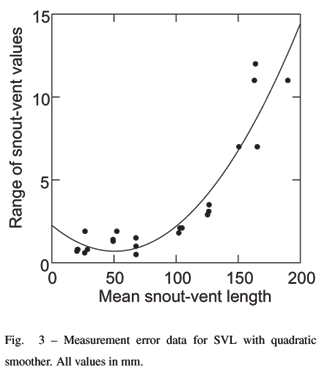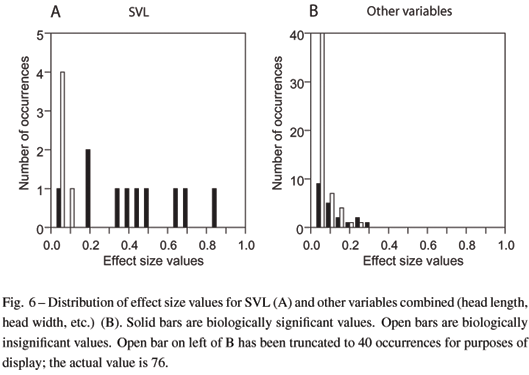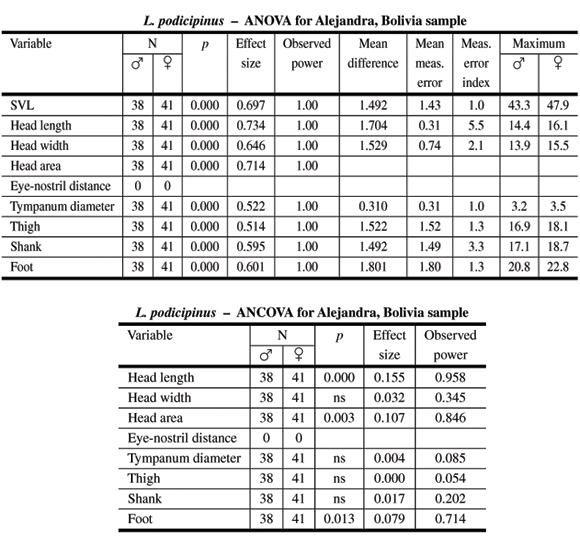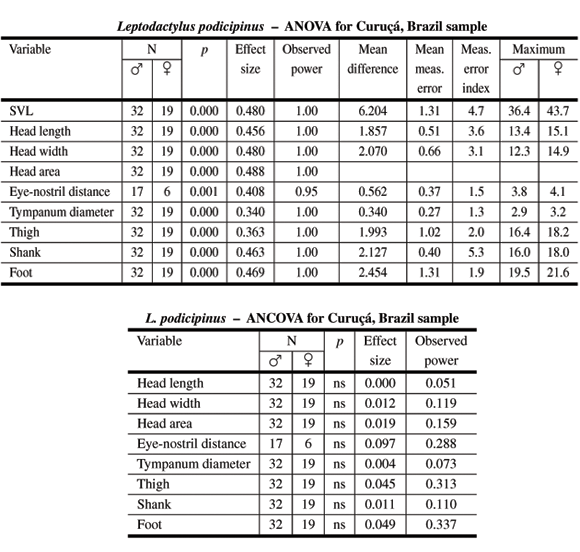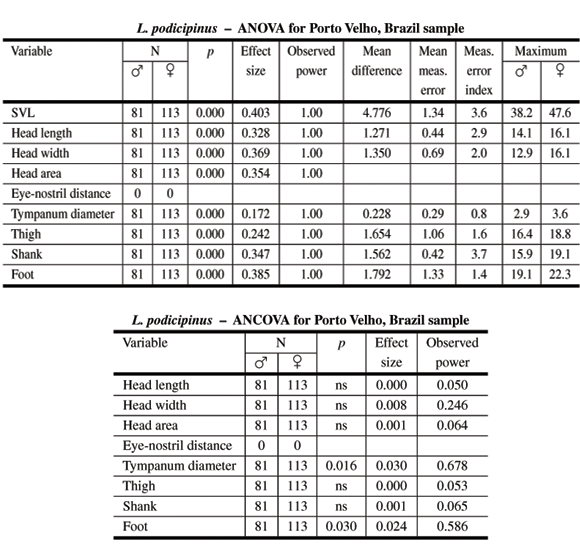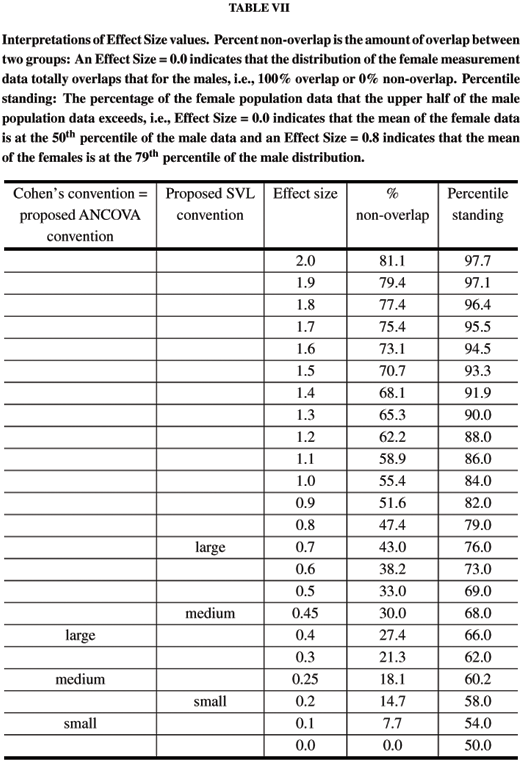Several analytic techniques have been used to determine sexual dimorphism in vertebrate morphological measurement data with no emergent consensus on which technique is superior. A further confounding problem for frog data is the existence of considerable measurement error. To determine dimorphism, we examine a single hypothesis (Ho = equal means) for two groups (females and males). We demonstrate that frog measurement data meet assumptions for clearly defined statistical hypothesis testing with statistical linear models rather than those of exploratory multivariate techniques such as principal components, correlation or correspondence analysis. In order to distinguish biological from statistical significance of hypotheses, we propose a new protocol that incorporates measurement error and effect size. Measurement error is evaluated with a novel measurement error index. Effect size, widely used in the behavioral sciences and in meta-analysis studies in biology, proves to be the most useful single metric to evaluate whether statistically significant results are biologically meaningful. Definitions for a range of small, medium, and large effect sizes specifically for frog measurement data are provided. Examples with measurement data for species of the frog genus Leptodactylus are presented. The new protocol is recommended not only to evaluate sexual dimorphism for frog data but for any animal measurement data for which the measurement error index and observed or a priori effect sizes can be calculated.
statistics; sexual dimorphism; measurement error index; effect size; frogs



